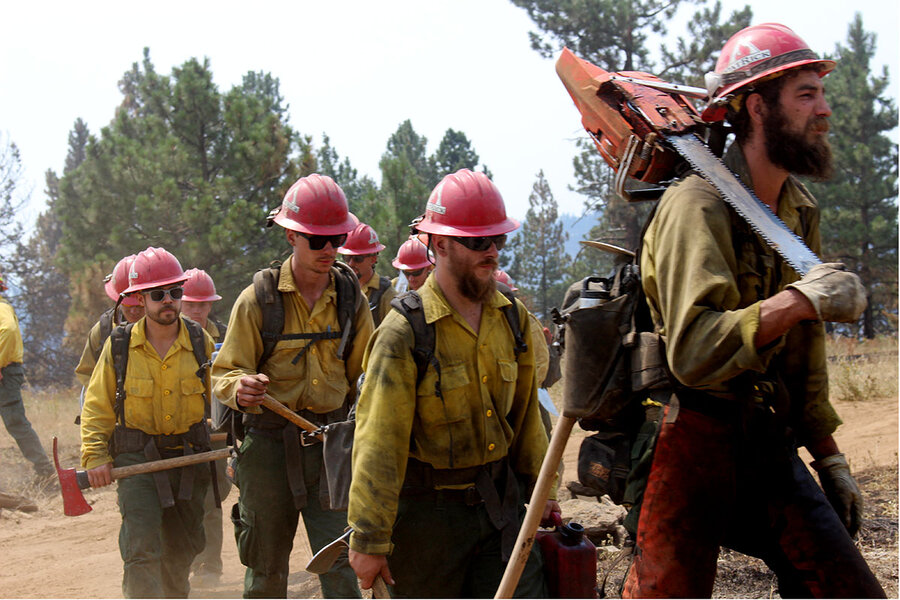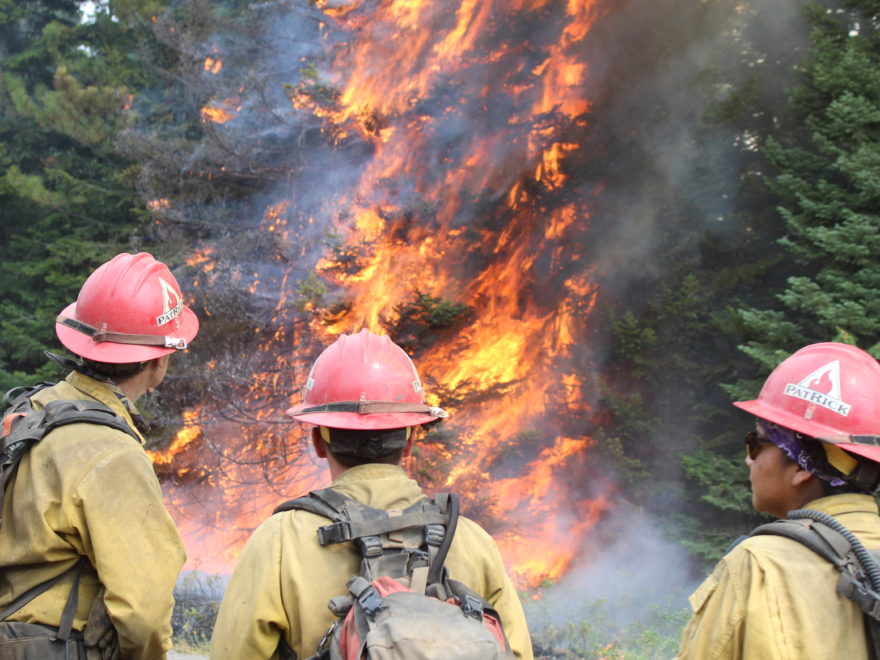Inside a wildfire response camp: Smoke, devotion, and fried chicken

Doug StruckA fire crew moves out on the Snake River Complex Fire near Craigmont, Idaho. The work is hot, dusty, and smoky.
August 18, 2021
- By Doug Struck Correspondent
SILVER LAKE, ORE.
Darren Ballentine thinks he knows what it takes to successfully fight a huge wildfire, and he can provide it: meatloaf.
“Good food and good morale make for a safe fire,” says Mr. Ballentine, who is in charge of feeding about 1,200 firefighters at the Oregon Bootleg Fire, which for two weeks was the largest in a swarm of wildfires in the West. “They love the meals like they would get at home.”
Tens of thousands of men and women are fighting the West’s wildfires. Mr. Ballentine, the food supply officer at Forward Operating Base ZX on the north side of the Bootleg Fire, is part of the army that provides the logistics, food, sleeping, and even showers for the firefighters. They are the machinery behind the scenes.
President Joe Biden recently has expressed concern for that machine. “Our resources are already being stretched to keep up. We need more help,” he told Western governors July 30. The ranks have been weakened by exhaustion from the pace of fires, concern over COVID-19, and the sapping demands of the work in a tinderbox of heat and drought.
The firefighting effort is made up of thousands of volunteers who give up their summers for the prospect of modest pay, unforgettable camaraderie, and dangerous but purposeful work. They get mobilized on short notice to a strange, hot, and dusty place, and create mini-cities in two days to fight fast wildfires. An estimated 15,000 federal firefighters and even more state and local personnel and contractors are in constant choreography. Whole crews are turned over every 14 days or so to provide rest, and numbers on the ground are shuffled daily as fires sputter low in some areas and leap ahead in others.
Behind the front lines is an infrastructure that must respond in lockstep: Encampments of thousands sprout within 48 hours, providing hot meals, tents, medical care, showers, watering stations, communications, and pay vouchers for everyone involved. All the personnel must be accounted for, monitored for their time on the line, and another man or woman must be ready to step in when a team shifts out of the front.
To read full story click here
